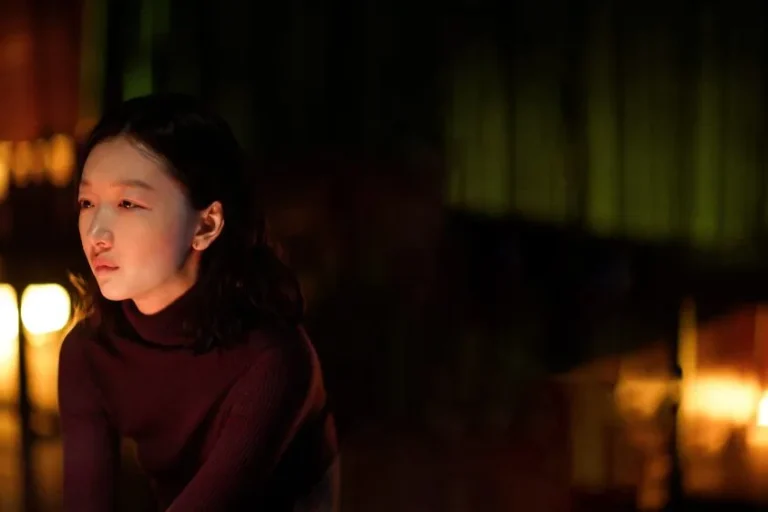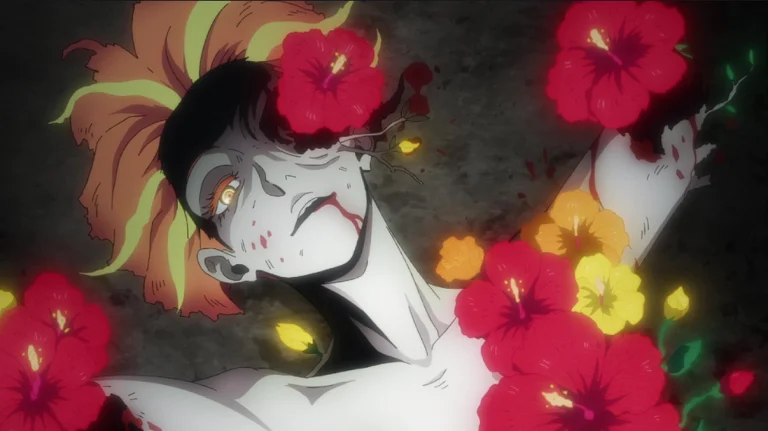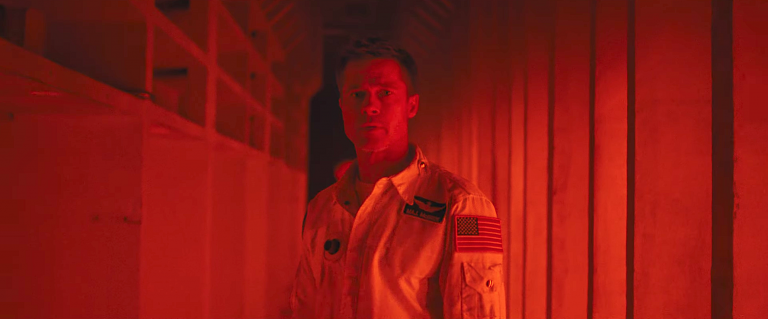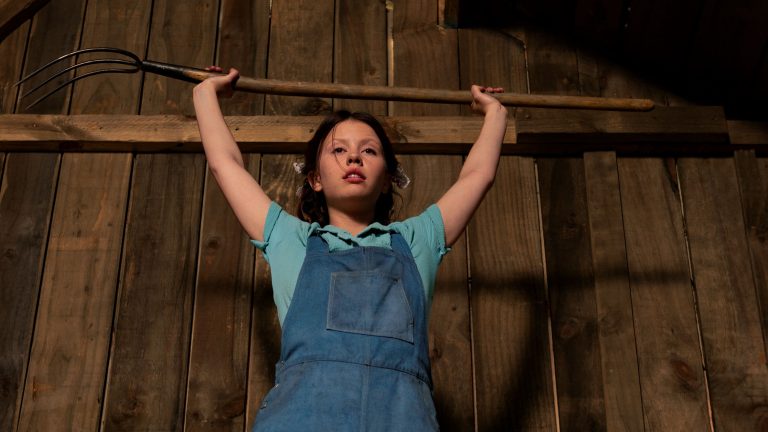Adh Chanani Raat IFFR Review: In the final instalment of Gurvinder Singh’s Punjab trilogy, an eponymous adaptation of Gurdial Singh’s novel which is fresh off its virtual premiere at the Rotterdam international film festival, darkness is a constant backdrop, framing literally and metaphorically the protagonist, Modan’s ultimately hapless striving to just exist with some scrap of dignity and self-determination, free of what constantly nags at him.
His restlessness seems to encapsulate and hold in it condensed history of deep-set malcontent against the land baron-like families who exercise complete sway over his village, Daroli. There are passages of measured lyricism here, soft-footed, swiftly undercut with cold and hard acknowledgement of the inevitable and the unavoidable. Power remains firmly, unquestionably, and unequivocally vested in the hands of select few influential families, locked in an inextricable nexus with politicians, cops, all who collude carefully not to permit the slightest disruption in the established order and scheme of things.
In many ways, Adh Chanani Raat (Crescent Night) is a film pervaded with a shifty, fuming discomfort around the status quo, the popularly accepted state of affairs that dictates the conditions of existence and livelihood. This is a film that is about the self-defeating skill, the crushing labour of withholding oneself, clamping down one’s raging instincts for expressing opposition to the norm; it is about containment and repression until the lid is finally blown off and everything comes undone.
Singh relentlessly asks very fundamental questions about complex questions of power and resistance, domination and confrontation, interlacing and interlocking with inquiries into the position and space for womanhood and their agency amidst all these. What is the endpoint of resistance? Does it finally yield anything of consequence? How long is one able to clutch onto the finest tendrils of patience and rigour just by oneself, bend low, with everything tailored to edge oneself out till it all comes apart? Does the inherent patriarchal arrogance within the messy land disputes as positioned by the film concede any room for what women think or desire? The silhouettes of answers are uniformly bleak and pitiless.
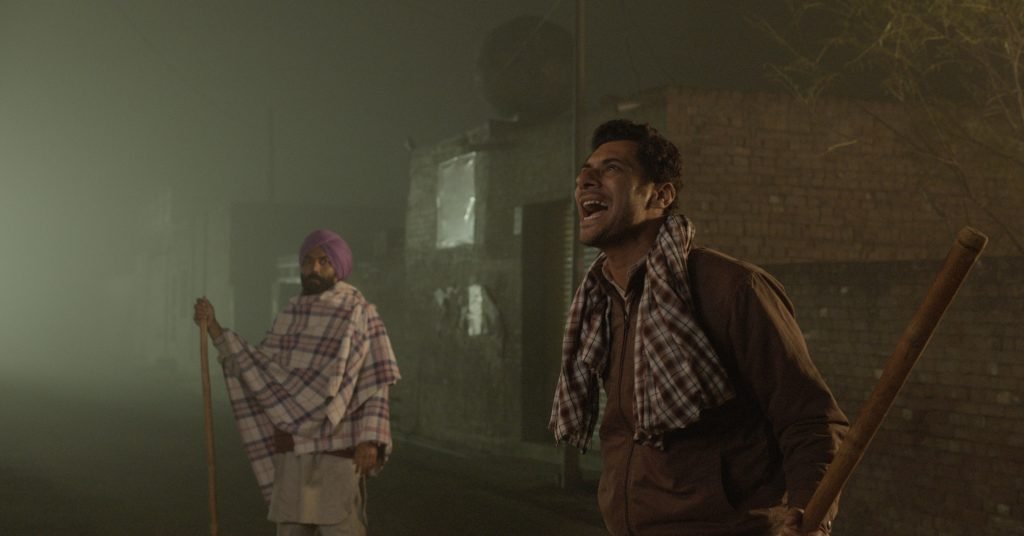
Modan’s mother becomes a poignant symbol for this casualty. When she relocates with Modan to their ancestral home, after it is refurbished and where she had not been to in six years since the bloody feud that cost her husband’s life, she has trouble reorienting herself to a place which was once her home, a site of memory-making tied to the foundations of her family along. She does not articulate it all but her unease percolates through several sections in the film. The ghosts and buried traumas of displacement lie long and heavy. There is no easy comfort offered by nostalgia in this film, for Singh keeps hinting and implying: be it the past or the present, the turmoil and general osmosis of fear and suspicion has seeped into the land and its residents too much to alleviate miseries.
Relations among the brothers have always been embittered by the tangle of the elder brother Sajjan’s supposed involvement with the chieftain Ghanna and his sons. There is a perennially fractious dynamic of the farmers with their land rights, which is mediated through an entrenched corrupt marsh of influence and privilege wielded by the higher-ups and their cohorts. The boundaries distinguishing the ownership portions of the fields are continually blurred and infringed on by Ghanna’s sons. This encroachment has the blessings of the land record holder himself, who is enmeshed into the power nexus, his life at potential risk dare he contravenes his masters.
The hollowed-out long-suffering people’s deprivation is visually reflected in the barrenness of the landscape with its connotation of negation and vacuity, superbly rendered in regular collaborator Satya Rai Nagpaul’s camerawork that refracts the material, tangible loss eloquently through a visual language dipped in some strange phantomlike sparseness curling and billowing amidst the towering high banyan trees edging the fields. The fog that hangs and settles over the lanes and fields with nightfall is exquisitely suffused with intrigue, despair, an insidious stench of ill-feeling. So is the ripple in a mossy pond at a late-night hour, stirred by a gun disposed of therein, immediately emblematic of wider repercussions that reverberate with a chain cycle like permanence.
Also, Read: Hawk’s Muffin [2022] ‘IFFR’ Review – A Metaphor For Perpetual Human Conflict Enveloped In Dystopian Science-fiction
Tragedy never seems too far behind in these mist-shrouded environs, an inescapable dread tinting the minds of the villagers who don’t have the security of financially stable self-reliance. Plummeting water levels leading to tube well constructions which in turn leave behind onerous debts leading to suicides constitute the fraught reality in Daroli, a representative of the usual Indian village where the nature of condition does not inflect indifference with any geographical dissimilarity.
In its tremulous depths, Adh Chanani Raat is also about trust forging, the ways in which we learn to open up, shed some misguided aspersion formed as a repercussion of past associations smudged by scepticism, and allow love and intimacy to sneak up onto us, which are projected as increasingly slippery to locate and establish in contexts and circumstances already so immanently fraught and precarious.
Hope is a transient refuge for aggrieved and battered souls as these. Forgiveness and retribution are trapped in a messy, volatile knot that threatens to tip over into outright violence by the merest spark of misgivings being rubbed the wrong way. This kernel of incendiary impulses is tied to a massaging of one’s code of masculine honour that is, as a villager alludes to, built into the Jat tribe like into the very soil they tread and inhabit.
Teenage boys have to pass the test of qualifying and affirming their masculinity, their fathers foisting it inadvertently on them in their seemingly best interests. Despite enduring a prison sentence, Modan’s well nursed righteous rage has not waned but he does assemble a life and a family for him, shoehorning the conflicts with the Ghanna family into manageable proportions.
Where the film triumphs are especially how it delicately and precisely unfurls intensely calibrated emotion and the heat of passion. Jatinder Mauhar traverses the complex emotional landscape that is in flux, trying to tenaciously negotiate an inner reckoning, winding from stretching his capacity for forgivingness, controlling his impulse for vendetta, and letting the regenerative power of love drill crevices into his toughened, tormented soul. He flits between immense, frightening all-consuming fury and the gentlest with persuasive agility.
A lesser actor would be stunted by the narrative sidetracking with a jarring jolt when Modan decides to seed out his recklessness and settle down properly with a wife and kids. Tonally and spiritually, the character’s arc at this pivotal point does not feel instantly credulous, but Mauhar makes it believable with a thoughtful, warmly considered embrace. Mauli Singh, essaying Modan’s wife Sukhpreet, has a lovely spiritedness that is unshowy and firm, despite the circumscribed role in the household.
Related to ‘Adh Chanani Raat’: Punjabi Cinema Gets Artsy
The writing, especially the dialogues, sags in several places, coming off as rather dull and uninspired, unnecessarily spelling what should have best been left unsaid which would have added significantly to the charged behavioural dynamics. However, these are glossed over by Singh’s excellent eye for composition, mise-en-scene, and his gift for constructing and tapping a scene’s innate tension in its unabbreviated fullness and richness.
A special mention must be made of Avneesh Chhabra’s editing that has a rare skill of being perfectly attuned to the rhythms and possible excesses of a scene. The locational and situational authenticity is as compellingly realized as it is in most of Singh’s work. The beats are exact and immaculate, in scene after scene, which unfolds in Singh’s characteristic fashion of long takes, reverting often to slow pans. The film’s strength leans closely on its gestures, visual motifs and aural impressions, more than what long stretches of dialogue can strainingly express which identify and relay the surge of barely repressed stormy inner states in swathes. The villagers have habituated themselves to the norm of unfairness and injustice so much so that Modak appears stranger-like to them in his radically opposing demeanour.
Divided into chapters such as ‘The Return’ and ‘The Recall’, Adh Chanani Raat suggests an endless dark night of the soul, the internal doldrums persistently tailing its characters, culminating in mercilessly discomfiting reiterations that direct recourse is perhaps not even a conceivable choice which can truly guide us to a vaster arena of safety. This lament over the unavailability and unfeasibility of efficient alternative strategies is leavened by occasional peace and concord but that too is denuded of. Singh plumbs the hollowing out, effected over generations, to rudely reveal nasty, distressing truths about the essence and nature of relations between the significant and the feeble who are thrust into unremitting subjugation. In the heavy fog that descends, all the ‘serpents in the path’ challenge and sorely deny any latitude for real progress and change.



